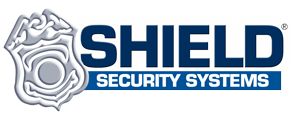If you have a business, then you need a customer relationship management (CRM) system.
CRM, or customer relationship management, refers to software that lets companies track every interaction with existing and potential customers. Software capabilities can change depending on the developer, but no matter what the software is usually just referred to by the acronym, CRM.
Now matter which provider you go with, most CRMs should allow you to track customer names, emails, and phone numbers. More complex CRMs will give you the ability to track phone calls, log emails, and even keep track of customer social media feeds.
Regardless of whether you go with a basic CRM or a more complex one, there are many ways you can make back office management easier with a CRM, and here are 10 of them.
Bonus Content: Download our free PDF “Manage Your Security Business with SAM Software” the CRM for security businesses
1. Improve Memory
You may be able to keep track of a few clients in your head or with a spreadsheet, but there comes a point when you just can’t track them all, not to mention their associated tasks and events. With a CRM, you can store and manage literally hundreds of clients and let back office management handle the task of memory and recall.
2. Centralized Information Storage
Unlike an individual’s inbox, all important client information is put in one central location with a CRM. When all communication is kept in one spot, you can see and share with the rest of your team without worrying about losing anything. It’s easy to update as well.
In sales, speed and ease are critical. When a salesperson has to spend time searching their inbox or call history to get in touch with a prospect, they waste time and therefore money. Furthermore, if they forget their last touch point, either due to a lack of follow up or the result of spam, then that sale could be lost.
A CRM would provide your back office management with a full, accurate record of an employee’s entire interaction history with a prospect, and it’s accessible with one click. Which means less manual work for your sales people, and more time being productive.
3. Instantly View Metrics
Without any extra effort, back office management gives you instant metrics on dozens of aspects of your business. Plus, you can actually create custom reports that are specific to your needs to track metrics more effectively.
4. See Every Client Status
Every time you make a call, send an email, or contact a customer or prospect you can update your CRM with their current status. Then, you will be able to review and see exactly where each client is in the sales process. This way far less time will be wasted on cold leads.
5. Look Back on History
A CRM helps keeps all conversations in one place, and makes it easy for you to quickly look back in time and see how things have progressed. You’ll be able to save more customers from leaving by catching something you may have otherwise missed.
6. In-Office Competition
It’s good for business to do comparisons and increase motivation. A CRM has leaderboards and goals to help create competition within a company. You can have in-office competitions to see who can carry on the most conversations, close the most deals, or sell the most dollars. As those leaderboards and competitions grow, so does your business.
7. Never Lose Your Data
If you use calendars, memo books, notepads, and other systems for tracking your data, then you’re likely to lose some of it at some point. Back office management effectively protects your data from being lost. While hard drives fail and servers crash, with the proper data backups and web hosting, you’ll never lose your data again.
8. Predict the Future
A good CRM can give you a reasonable expectation of the future based on past events and performances. If your history is stored correctly, then a good CRM can analyze that information to give you a good idea of what’s to come. You can see your prospective deals and have an accurate feel for how much business you can expect to see in the months to come.
9. Track Your Events and Tasks
A CRM will not only help you keep track of every task and event, but also relate them to the appropriate customer or lead. It becomes an enhanced calendar system that allows you to see all of your tasks and events, as well as your teammates’ tasks.
10. Get Organized
Last but not least, organizing all your information into one system gives you the big picture. A CRM integrates emails, tasks, calendars, and so much more, in one easily maintained and managed place. By being organized and storing things in a central location, you’ll bring all the pieces together and keep your business organized.
Conclusion
While you might feel you can do this all in a spreadsheet for just a handful of your current customers, you need to think about the future. That’s not the most scalable plan if you want to grow your business. Invest in a CRM for your business to make your work more seamless and efficient.

